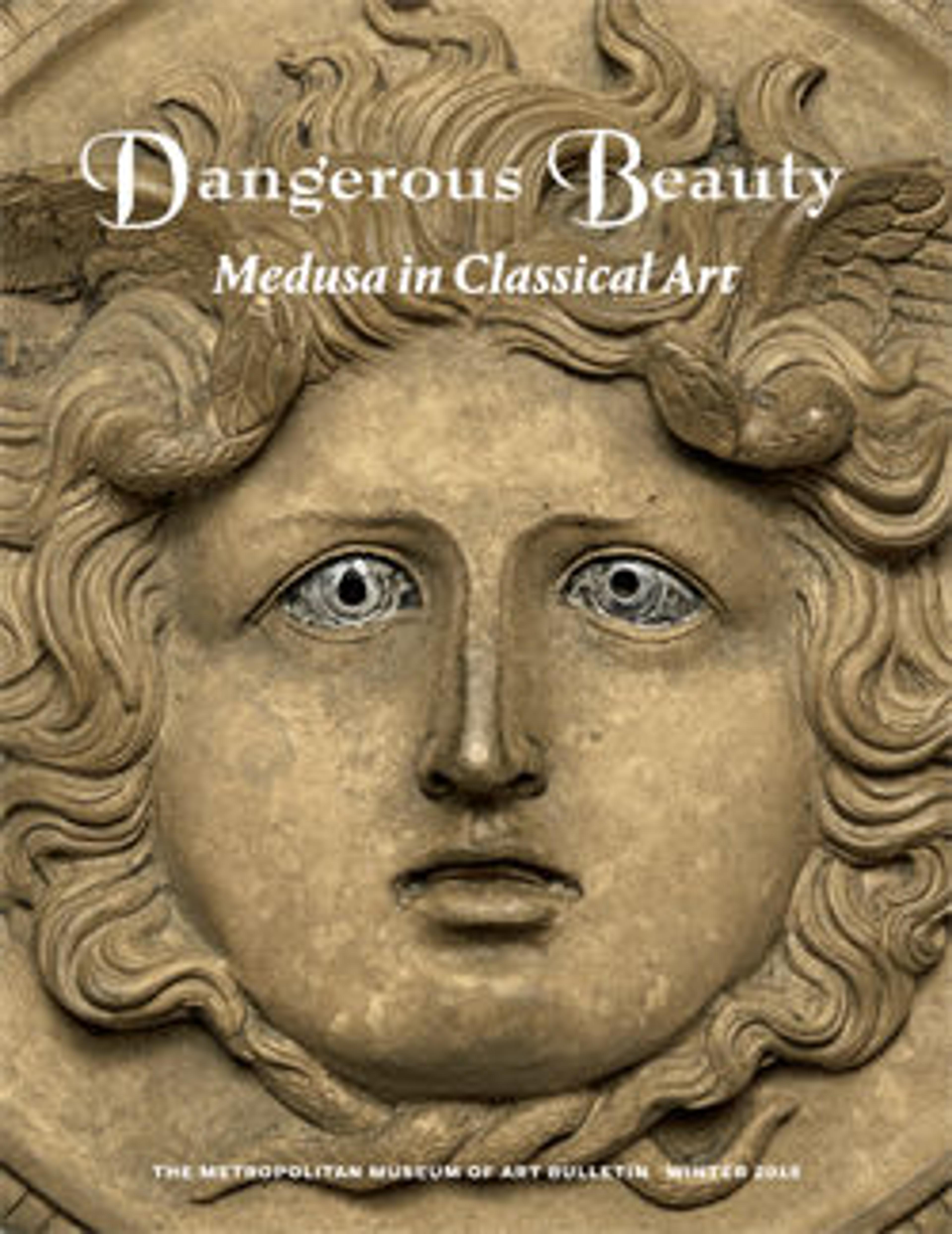Terracotta kylix: eye-cup (drinking cup)
Interior, gorgoneion (Gorgon's face)
Exterior, obverse and reverse, between eyes, warrior
This is one of a few Attic cups with a so-called Chalcidizing foot that is characteristic of black-figure cups made by Greek potters in southern Italy. Though the question of priority has been much debated, the Attic examples are probably the earlier ones. The motif of ships occurs particularly on kraters (bowls for mixing wine and water) and kylikes during the late sixth century B.C. Analogies between sailing and the symposium (drinking party) appear in literature. Indeed, the effect of ships circumnavigating a drinking vessel full of wine must have been intoxicating in itself.
Exterior, obverse and reverse, between eyes, warrior
This is one of a few Attic cups with a so-called Chalcidizing foot that is characteristic of black-figure cups made by Greek potters in southern Italy. Though the question of priority has been much debated, the Attic examples are probably the earlier ones. The motif of ships occurs particularly on kraters (bowls for mixing wine and water) and kylikes during the late sixth century B.C. Analogies between sailing and the symposium (drinking party) appear in literature. Indeed, the effect of ships circumnavigating a drinking vessel full of wine must have been intoxicating in itself.
Artwork Details
- Title:Terracotta kylix: eye-cup (drinking cup)
- Period:Archaic
- Date:ca. 520 BCE
- Culture:Greek, Attic
- Medium:Terracotta; black-figure
- Dimensions:H. 3 3/4 in. (9.5 cm)
width with handles 14 5/16 in. (36.4 cm)
diameter of bowl 11 5/16 in. (28.8 cm) - Classification:Vases
- Credit Line:Fletcher Fund, 1956
- Object Number:56.171.36
- Curatorial Department: Greek and Roman Art
Audio
1022. Terracotta kylix: eye-cup (drinking cup)
0:00
0:00
We're sorry, the transcript for this audio track is not available at this time. Please email info@metmuseum.org to request a transcript for this track.
More Artwork
Research Resources
The Met provides unparalleled resources for research and welcomes an international community of students and scholars. The Met's Open Access API is where creators and researchers can connect to the The Met collection. Open Access data and public domain images are available for unrestricted commercial and noncommercial use without permission or fee.
To request images under copyright and other restrictions, please use this Image Request form.
Feedback
We continue to research and examine historical and cultural context for objects in The Met collection. If you have comments or questions about this object record, please contact us using the form below. The Museum looks forward to receiving your comments.
